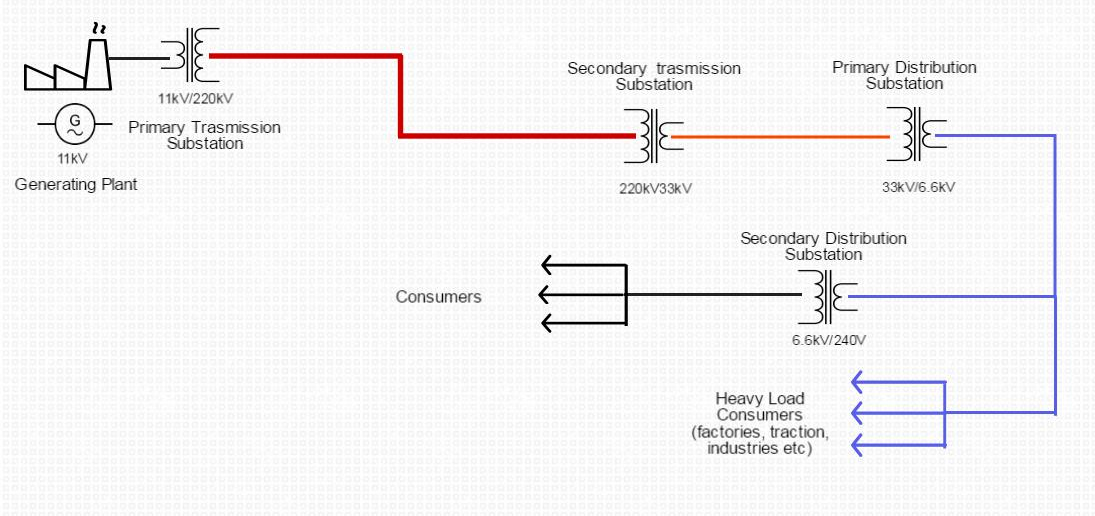The electricity which is generated in the power plants needs to be transmitted and distributed over large distances of 100s and 1000s of kms before it meets the end user/customer. For this purpose transmission and distribution lines are established and an electrical network is established across the entire country.
But this is not sufficient. Electrical substations are required to be established at specific locations in the electrical network for proper electricity transmission and distribution. Apart from routing, load management is also a one of the key functions of an electrical substation.
There are two main types of substations which are commonly observed in any electrical network
- Transmission substation
- Distribution substation
General scheme of power transmission & distribution systems
Transmission Substation
Transmission of electricity refers to transportation of electricity over large distances of more than 100-1000 km. This requires very long conducting lines of more than few 100 kms. The total impedance (resistance + reactance) offered by such long lines is also very large. With such high impedance values the Power loss is bound to be very large.
Since Power loss= I2R
But unfortunately we cannot reduce this total impedance offered, but we can reduce the current at which we transmit the electricity.
As we Know that, Power (P) = VI
For the same amount of power transmission, it would be required to increase the voltage (V) to minimize transmitted current and the associated power loss.
So this is the main function of the transmission substation to step up the voltage. These substations are located near the generating stations. A step up transformer performs this step-up function. It is also sometimes referred as transmission transformer.
These transformers increase the voltage up to a transmission voltage (66 kV, 110 kV, 220 kV, 400 kV) so it can travel long distances over high-voltage transmission lines. The voltage at the power generation plant is typically about 11kV.
Along with the Step-up transformer there are many other important electrical equipment which are essential for proper functioning and protection of the substation like Lightening Arrestors, Circuit Breakers, Switches etc)
Distribution Substation
The primary purpose of distribution substations is to distribute the electricity to the end user. Many parallel lines come out from here which further go to the end user. Step down transformers are used in order to bring down the voltage levels at usable levels. Typical distribution voltage levels used in India are 11 kV, 22kV 33 kV etc. since the distribution does not happen over very large distances these low voltage levels do not cause any major power loss.





